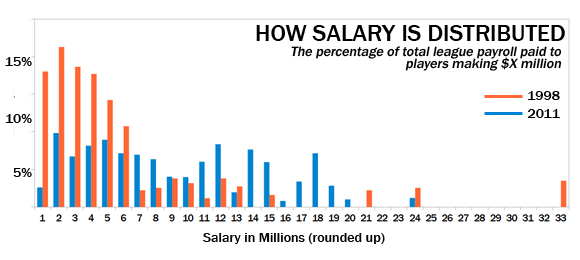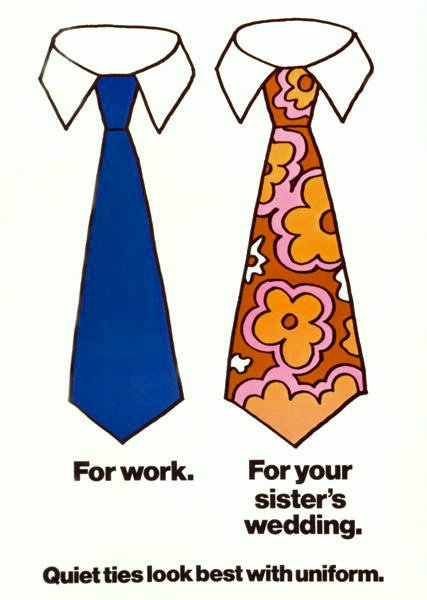Are you important? How far away from the inmates do you live?
I have to think of all the jobs in this fantastic country of ours that chief among them for stress, danger, and sheer 'Sunday night and I can't believe I have to go to work tomorrow insomnia', has to be working inside a jail, prison, or penitentiary.
On the plus side, since our nation doesn't seem at all on course for reducing or even slowing the growth of incarceration rates, career opportunities in the prison system could be one area in an otherwise downbeat job market that might offer job seekers some prospects, and corrections system staff some level of job security that is often hard to come by these days. Sure, you have to deal with the daily inconveniences of metal detectors and pat-downs when coming to work, and every once in a while there could be some kind of security crisis like an escape that might throw a little hiccup into your day. And there is always the chance, however remote, that a more significant incident like a widespread inmate riot could ensue, the kind of circumstance that might require a full and comprehensive response from all prison officials and staff members to respond rapidly, and in numbers. Can I use my FMLA for this?
Can I use my FMLA for this?
Since these occasions could potentially require rapid response from off-duty guards and other officals at a moment's notice, often the corrections officers and the other high ranking prison officials will be provided (mostly free), housing in neighborhoods quite near the prison itself, such that response times are reduced, and quick action can be taken in the event of a major security or safety incident. Essentially, if you have a role, either in prison leadership or in security, it makes sense to have you situated close enough to the prison such that you can respond quickly if called upon in a crisis. When the inmates decide they've had enough of the man keeping them down, you better be ready and able to respond quickly.
So what kind of persons and job roles at the prison should receive free or otherwise subsidized housing near the facility in exchange for their ability to be rapid responders and to be able to provide their leadership in a time of crisis, with the expectation that their fast contributions could mean the difference in a minor incident turning into a major one?
Certainly the warden and assistant warden. Probably the senior corrections officers and guards. And maybe some other mid-level guards too. Possibly the prison medical staff and maybe even some of the communications and other outward-facing individuals.
How about the prison's Head of Human Resources?
Would you rate the HR leader for the prison in that 'special' category of staff that needs to live in close proximity to the facility, and at taxpayer expense?
Well officials in the State of New Mexico are about to try and sort that question out. It seems that for at least 5 years, the head of HR for the State Department of Corrections, Elona Cruz, has lived rent-free in a home situated a 'stone's throw' from the state penitentiary. And according to the comments from Acting Deputy Secretary of Corrections Gregg Marcantel, it look's like Elona's time in state provided housing is soon to end. When asked whether the department's head of HR should be living in corrections department provided housing Mr. Marcantel said- "From HR to an air-conditioning repairman, the answer would be no.”
Nice. Comparing the Head of HR for the Department to the A/C guy. Thanks Gregg. Any chance you'll be signing off on the new Leadership Development program we've proposed for next year? Didn't think so.
Kidding aside though, it is unlikely that the Head of HR would be called upon to thrust him or herself into a potentially volatile and dangerous situation alongside the prison's first responders in the event of a serious security incident. Those kinds of incidents are more about using force, strategy, tactics, and execution of trained and ingrained protocols to attempt to regain control of the situation, and minimize the risk of injury to staff and inmates, and the damage to facilities and property. Sparing the easy jokes about organizing the facility picnic when teargas is flying, real life danger and violence is not typically the strength of HR.
But the comments from the Deputy Secretary are instructive - in his view the idea of HR being at all essential or important in times of crisis is sort of implausible, as evidenced by his comparison of HR to the A/C repairman.
And while it is natural and unsurprising that he's take this position, one thing is pretty clear - the farther away from the inmates you live, the lower your status and relative importance at the prison.
While it's great to accept a sweet set-up with free housing and a short commute, eventually you'll get called out. And if you're not someone needed to run into the prison in a crisis, well then, you can live 45 miles away with the maintenance staff.
(Here's the part where you make the comparison to 'charging in to the prison riot' with whatever equates to that kind of drama in your organization, and think about whether your leaders want you right next to them at the ready, or off 100 miles away).
Have a Great Weekend!

 Steve
Steve



